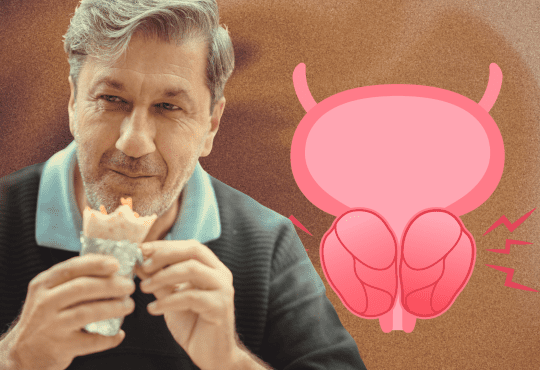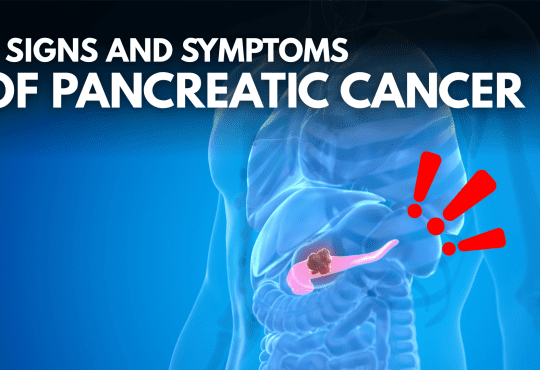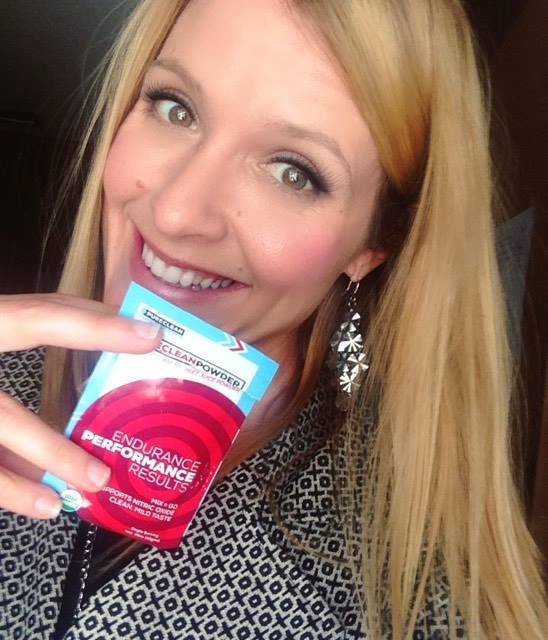
Slash Your Prostate Cancer Risk By 20%
Today, we’ll be revealing how you can significantly reduce your chances of developing prostate cancer through simple lifestyle changes and preventative measures.
It’s the second most common type of cancer in men, with approximately one in nine being diagnosed during their lifetime.
The thought of being diagnosed with prostate cancer is terrifying for many – it can lead to feelings of uncertainty, anxiety, and fear about the future.
This disease not only affects physical health but also takes an emotional toll on both patients and their loved ones.
So how does prostate cancer occur?
It begins when cells in the prostate gland start to grow uncontrollably due to various factors such as genetics or exposure to harmful substances.
These abnormal cells eventually form a tumor which can invade nearby tissues or even spread to other parts of the body (a process called metastasis).
Today, we’ll look at some of the ways you can lower your risk for prostate cancer – all backed by scientific research!
Let’s dive a little deeper into how to reduce your risk of prostate cancer starting with…
Tip number 6. Limit processed meats and red meat
So picture this – it’s a warm summer day, you’re at a barbeque, and the tempting aroma of a sizzling steak wafts through the air.
Or maybe it’s game night, and what better accompaniment to the excitement than a juicy burger?
While these scenarios are mouth-watering and incredibly hard to resist, research suggests that we might need to rethink our relationship with red and processed meats.
A study published in the British Journal of Cancer in 2018 found that men who ate over 1.5 servings of processed meat per day had a higher risk of advanced prostate cancer compared to those who ate less than 0.5 servings a day.
Meanwhile, a meta-analysis from 2015, published in the journal Nutrition and Cancer, showed a modest but significant association between red meat intake and prostate cancer.
So, what’s the solution?
Of course, this doesn’t mean you need to cut out your favorite meats entirely, but moderation is key.
Shifting your diet to include more lean proteins like fish and chicken can be a great start.
Fish, particularly fatty ones like salmon and mackerel, are rich in Omega-3 fatty acids which, according to a study in the American Journal of Clinical Nutrition, may be associated with a reduced risk of prostate cancer.
But let’s also throw some love towards plant-based proteins…
Foods like lentils and beans aren’t just good for you; they are also incredibly versatile and delicious.
They pack a punch with high fiber and protein content, and a study published in the JAMA Internal Medicine Journal in 2016 showed that a higher intake of plant protein was associated with lower overall mortality.
So next time you’re about to fire up the grill, consider opting for a grilled salmon steak or a plant-based burger.
Your taste buds can still enjoy a great meal, and your body will thank you in the long run!
Remember, every healthy choice counts towards a healthier you.
Tip Number 5. Exercise regularly
Exercise is almost like a magic potion…
A potion that’s free, accessible, and has an incredibly broad range of benefits.
It boosts our mood, keeps our heart happy, and, believe it or not, can be a significant ally in our battle against various health conditions, including cancer.
Imagine physical activity as your body’s own personal housekeeping service.
It helps to regulate your body’s functions, maintain a healthy weight, and clean up potentially harmful substances.
When it comes to prostate cancer, regular exercise might be more potent than you’d think.
A comprehensive study published in the Journal of Clinical Oncology in 2011 found that men who were physically active had a lower risk of overall prostate cancer progression.
And the type of exercise doesn’t necessarily mean you need to be running marathons or climbing mountains.
The American Cancer Society recommends at least 150 minutes of moderate-intensity activity – like a brisk walk, or a bike ride – or 75 minutes of vigorous-intensity activity such as jogging or high-intensity interval training each week.
Why does this help, you might ask?
Well, staying active helps you maintain a healthy weight, which is crucial in cancer prevention.
A study in the Annals of Oncology in 2014 showed that obesity is associated with a higher risk of aggressive prostate cancer.
By managing your weight, you’re helping your body to keep everything in balance, reducing the risk of cancer, and countless other health benefits.
Think of exercise as an investment – every minute spent being active pays dividends for your health.
And the best part?
It’s an investment you can start making right now.
So, lace up your trainers, jump on your bike, or unroll that yoga mat – your prostate (and the rest of your body) will thank you!
Tip Number 4. Maintain a healthy weight
Now let’s look at the link between weight management and reducing prostate cancer risk.
Think of carrying extra weight like lugging around a heavy backpack all the time.
It’s cumbersome, it slows you down, it puts a strain on your joints, and over time, it can lead to more serious health issues, such as heart disease, diabetes, and indeed, cancer.
But why is that, and what does the research say?
Well, a study that looked into this matter was a 2014 research review in the Annals of Oncology.
This comprehensive review reported a striking association between obesity and advanced prostate cancer.
Imagine the body’s hormonal balance as an intricate dance, with each hormone playing a specific role.
Obesity disrupts this balance, leading to higher levels of certain hormones such as insulin and specific growth factors that can stimulate the growth of cancer cells.
So, how do we get our bodies back into balance?
The equation is simple: regular physical activity plus balanced nutrition equals a healthy weight.
As we’ve discussed earlier, the American Cancer Society recommends at least 150 minutes of moderate-intensity or 75 minutes of vigorous-intensity activity each week to keep the body active and fit.
On the other side of this equation is balanced nutrition.
Embracing a diet rich in fruits, vegetables, whole grains, and lean proteins while limiting high-calorie foods and beverages full of sugar can help manage weight effectively.
Remember, managing weight is not about striving for perfection or achieving an ‘ideal’ body.
It’s about lightening that metaphorical backpack you’re carrying, making it easier for you to enjoy your journey to its fullest.
It’s about reducing strain on your body and decreasing your risk of diseases like prostate cancer.
So, let’s eat mindfully, move joyfully, and live healthily!
Tip Number 3. Limit alcohol consumption
An occasional glass of wine or beer, savored responsibly, isn’t usually a problem, but here’s where it gets tricky…
Excessive drinking is not just a potential highway to hangovers; it’s a road that can lead to various health issues, including certain types of cancer.
It’s similar to a gamble, the more you drink, the more you raise the stakes of your health risks.
Research has shown a connection between alcohol consumption and prostate cancer risk.
A comprehensive review in the journal BMC Cancer in 2016 found that heavy alcohol consumption could increase the risk of prostate cancer, suggesting a dose-dependent relationship.
The American Cancer Society’s guidelines state that men should aim to have no more than two alcoholic drinks per day.
This isn’t about eliminating all enjoyment from life, but rather, it’s about setting limits that can help reduce risk.
Tip Number 2. Quit smoking.
So, smoking. We’ve heard it before – it’s bad news.
But, do we truly grasp the breadth of its detrimental effects on our health?
Beyond the familiar risks like lung cancer and heart disease, smoking also plays a role in the development of several other types of cancer, including prostate cancer.
Imagine your body as a bustling city, and the smoke you inhale is like a dense, toxic fog descending over it.
This fog contains thousands of chemicals, many of which are known carcinogens.
When these chemicals enter your body, they cause damage at the cellular level and can interfere with your body’s ability to repair this damage, increasing the risk of cancer cells forming.
As grim as this may sound, here’s the silver lining: quitting smoking can dramatically decrease this risk.
A large-scale study published in JAMA Oncology in 2015 found that men who quit smoking for more than 10 years had a similar prostate cancer risk as those who never smoked.
What’s more, the benefits of quitting smoking begin almost immediately, with heart rate and blood pressure dropping within 20 minutes of quitting according to the American Cancer Society.
The message is clear – it’s never too late to quit, and the rewards are immense.
The moment you stop smoking, you start reducing your cancer risk.
So, if you’re a smoker, consider reaching out for help to quit. It might be the most important decision you make for your health.
Remember, your body has an incredible capacity for healing, and each day without a cigarette is a step towards a healthier future.
Last but not least is…
Tip Number 1. Consider your risk factors
When we think about health conditions like prostate cancer, it’s tempting to view them as a game of chance.
However, prostate cancer doesn’t roll the dice.
Certain factors, such as family history, age, race, and specific genetic changes can tilt the scales, increasing the risk of developing the disease.
For instance, African-American men and those with a family history of prostate cancer have a higher risk.
This isn’t about fear, but rather understanding and awareness.
A study published in the journal Cancer in 2013 found that African-American men are more likely to develop prostate cancer and have a higher mortality rate.
Another study in The Prostate journal in 2016 found a clear association between family history and increased risk.
Understanding your individual risk allows you to take proactive steps towards prevention, and it can inform discussions with your doctor about potential screenings and lifestyle changes.
One of the most common screenings is the Prostate-Specific Antigen (PSA) test, which measures the level of PSA in the blood.
PSA is a protein produced by the prostate, and its levels can rise due to prostate cancer but also other conditions like an enlarged or inflamed prostate.
So while it’s not a definitive test for cancer, it can be a useful tool in the early detection process when combined with other information.
We can’t stress this enough: early detection is crucial, it’s a game-changer.
Catching prostate cancer early when it’s still localized increases the 5-year survival rate to nearly 100%, according to the American Cancer Society.
Discussing with your doctor about when to start these screenings based on your individual risk is an essential step in proactive healthcare.
Knowledge is power when it comes to health. By understanding your risk and the benefits of early detection, you’re arming yourself with the tools to make informed decisions, take action, and hopefully tilt those scales in favor of a healthier future.
That brings us to the end of our exploration into the ways you can reduce your risk of prostate cancer.
From understanding the role of diet and exercise, to the impact of alcohol and smoking, and the importance of recognizing individual risk factors and early detection, we’ve journeyed through a wealth of knowledge that can empower you to make informed decisions about your health.
But remember, knowledge is just the first step. Applying these tips to your everyday life is where the real change happens.
Remember, we’re in this together, learning and growing towards a healthier, happier future.
As always, consult with your healthcare professional before making any significant changes to your lifestyle or health routine.









